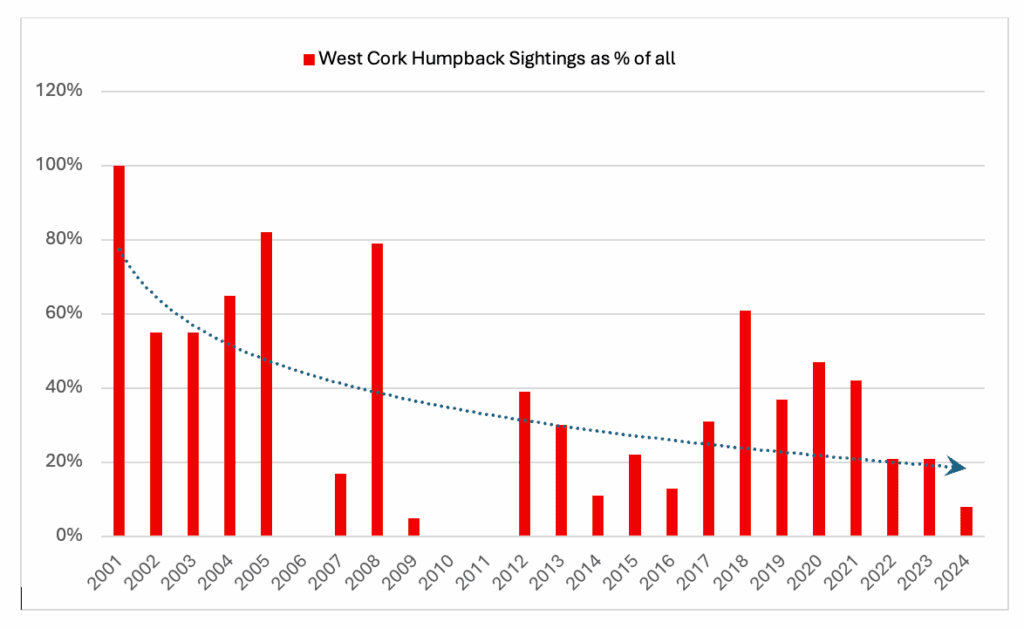We read with interest the interview with pelagic fisherman Ger Sheehy on the Southern Star in early June 2025 and wish to respond to some important issues raised in it.
The article suggests that observations of year-on-year declines in sprat by stakeholders such as local whale watch operations, anglers and inshore fishermen, whose livelihoods all depend to varying degrees on sprat, are somehow merely “anecdotal” and as such, not worthy of consideration. Yet we are expected to take the observations by a tiny number of large trawler owners of a northward shift in the distribution of sprat as somehow being “fact”. In the absence of this being supported by any credible science we are aware of, surely this too is anecdotal and rather convenient that the industry can blame the lack of sprat on Climate Change.
Nobody is saying that Climate Change or even pollution are not factors in the disappearance of sprat in west Cork’s once rich waters, but we’ll never know as long as their industrial extraction continues at the current elevated rates. There is clearly a data deficit and for this, the blame rests squarely with successive governments for failing to carry out any stock assessment of this most ecologically sensitive species, which could provide a road map to a sprat recovery.
Counting whales isn’t easy, but it’s a lot easier than counting sprat, and is something that our friends at IWDG are very good at. After 30 years of running the Irish Cetacean Sighting Scheme, which validates all reports of porpoises, dolphins and whales, they have the longest running dataset of validated whale sightings from all Irish waters and with their permission we reproduce this graphic which provides you with the clear evidence that our most iconic whale, the humpbacks are clearly voting with their fins and bypassing west Cork. This decline in recent years of the % of humpback sightings from Irish waters that originate in the waters between the Old Head of Kinsale and Mizen head, should sound alarm bells.

There have been two extensive public consultations in recent years; both of which were among the most heavily subscribed with thousands of respondents, who were overwhelmingly in favour of an overhaul of the current sprat free for all. With deep pockets, the most recent attempt by the government to ban large trawlers of >18mts fishing within 6nm of our shore was overturned as a result of a high court legal challenge from just two powerful fishermen, which succeeded only on a technicality. The threshold in Ireland for being able to seek high court judicial reviews is very low by almost any comparable international standards.
Ger talks of his wish to continue to fish for another 35 years, but with no mention of the next generation? The pelagic fishing industry needs surely take a more long term view and consider not only what’s in their narrow interest, but what’s best for the wider coastal community as well of course the marine ecosystem that rely so heavily on sprat.
While it’s heartening to hear the pair trawlermen say they’ll “do what the scientists advise”, this begs the question why they are currently ignoring the best available scientific advise from ICES (the International Council for the Exploration of the Seas) who are the marine science organisation tasked with providing impartial evidence on the state and sustainable use of our oceans. Their current recommendations are a catch limit for sprat not exceeding 2,240 tons. The Sea Fisheries Protection Authority based in Clonakilty most recently released figures confirm these boats have landed multiples of this, with a published figure of 16,000 tons landed in 2024. So much for the pelagic trawlermen being willing to heed the best available science!
This is not a traditional fishery in west Cork. Nobody fished for sprat until as recently as the late 1970’s. Previous generations perhaps didn’t have to, but they also understood the folly of removing the very species that feeds everything else up the food chain. It’s a classic example of elements of the pelagic fleet being content to fish down the trophic levels. It’s sprat today; after that there is pretty much nothing left but krill and zooplankton, which the Chinese have already started fishing in Antarctica. All we are calling for is a moratorium on this damaging fishery until the science can establish the facts- not opinions. Only then can informed decisions be made on quotas etc. In the meantime, the Precautionay Principle must apply and if this means compensation for the few trawlers engaged in “spratting” then so be it; it’s likely the main reason they’ve shown such an interest in this species in recent years. Sadly, it’s always about the money.
